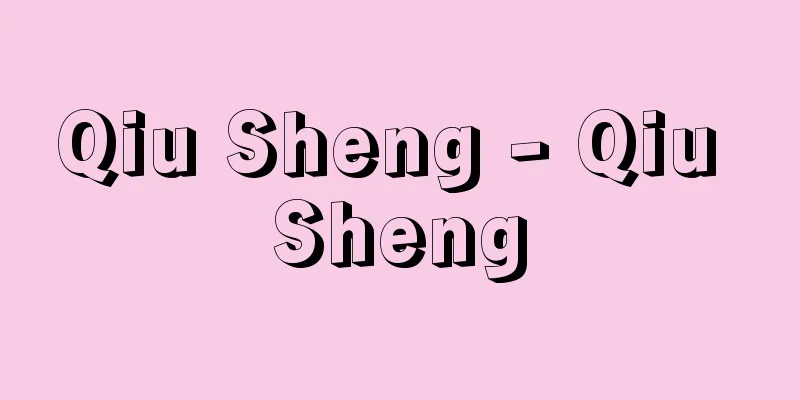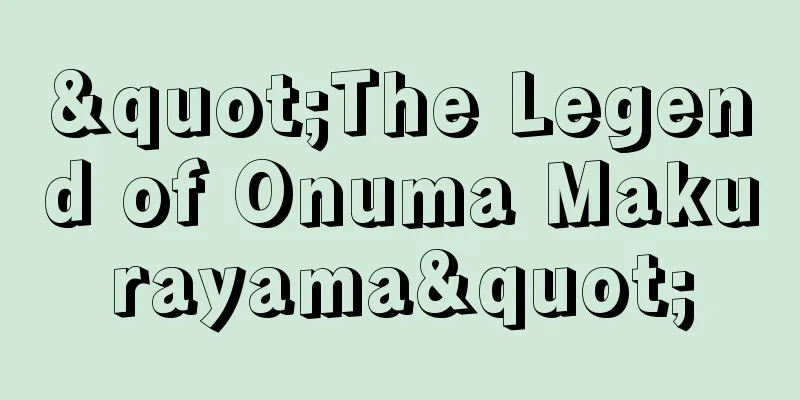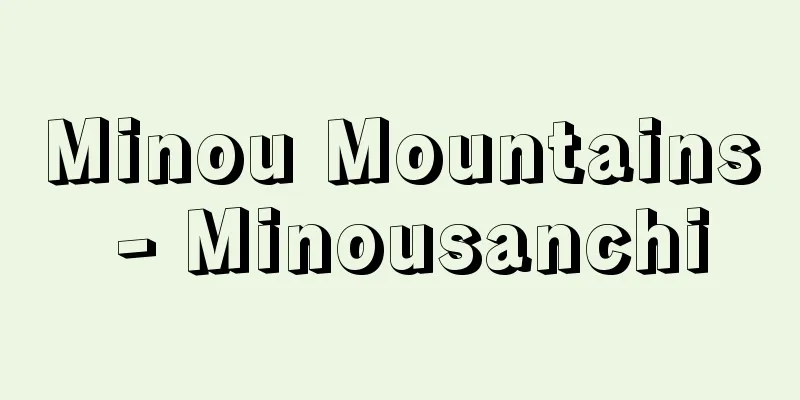Qiu Sheng - Qiu Sheng

〘Noun〙 One of the four tones of Chinese characters. It can refer to either a falling tone or an ascending tone. For the four tones of Chinese characters that were introduced to Japan in ancient times, it refers to the ascending tone. Kyosei. ※Bunkyo Hifuron (around 809-820) Ten "Seiho Kyosei" ※Rodriguez Nihon Dai Bunten (1604-08) "Quioxǒ (Kyoshou) . That is, Saru Koe"Kyo-sei [go-sei]Source: The Selected Edition of the Japanese Language Dictionary About the Selected Edition of the Japanese Language Dictionary Information |
〘名〙 漢字四声(しせい)の一つ。下降調をさす場合と、上昇調をさす場合がある。古く日本に伝わった漢字の四声については、上昇調をさしていう。きょせい。※文鏡秘府論(809‐820頃)天「西方去声」※ロドリゲス日本大文典(1604‐08)「Quioxǒ(キョシャウ)。すなわち、サル コエ」
きょ‐せい【去声】出典 精選版 日本国語大辞典精選版 日本国語大辞典について 情報 |
Recommend
Kiku Peninsula
A peninsula located at the northeastern tip of Ky...
deep-sea
In marine biology, the deep sea refers to a depth...
Toyota Motor Corporation - Toyota Motor Corporation
The world's top automobile manufacturer and Ja...
Orthovanadic acid - Orthovanajinsan
…These general formulas V 2 O 5 ・ n H 2 O are wri...
Kyosai
...Grape and peach cultivation began in earnest i...
Gaza - Gaza (English spelling)
It is the central city of the Palestinian Autonom...
Pardosa astrigera (English spelling)
…There are about 90 species recorded in Japan, an...
Arques - Arques
...It is shaped like a Greek wine vessel (klarte)...
Brewer - Kurodo
〘Noun〙① Staff of the Kurodo-dokoro ( Kurodo- dokor...
Mr. Onimura
...The Baekje clan in the narrow sense includes t...
Embolism
In vascular systems (blood vessels and lymphatic ...
Land-attached fishing grounds
The "Yamano Umikawa Iriya" ("Common...
Kawaminami [town] - Kawaminami
A town in Koyu County facing the Hyuga-Nada Sea in...
Bunraku puppet theatre
Ningyo Joruri is generally a general term for pup...
Plantago lanceolata (English spelling)
…[Yoshiharu Iijima]. … *Some of the terminology t...









